Although the Formula 1 calendar has changed every year since the introduction of the championship in 1950, with 75 different tracks having hosted Grands Prix, there are a group of tracks considered by most fans to be the ‘classic tracks.’ These are so-called mainly because they are (mostly) the tracks that have held the most races in history, but also because they are widely considered to be the best tracks on the calendar. They are usually the most exciting to watch the cars on, require the most skill to perfect and also have the most history in the championship.
The tracks I would consider to be ‘classics’ are Monza, Monte Carlo, Silverstone, Spa-Francorchamps, Suzuka and Interlagos. Almost every F1 fan, if selecting their favourite track, would choose one of these six, and they should be absolutely undroppable from the calendar. It would be a travesty to lose any of the six due to money issues. The other track I would consider to be a classic is the Nordschleife Nurburgring, last used in 1976 after F1 decreed it too dangerous following Niki Lauda’s fiery accident. Montreal, Hockenheim, Hungaroring, Red Bull Ring, Zandvoort, Catalunya and Imola are also great tracks with much history, but they all fall just short of classic status.
Monte Carlo
The first classic track is Monaco, and as it has replaced the Formula 1 championship as part of the ‘Triple Crown’ (along with Le Mans and the Indy 500), it is considered the most iconic race track and so should be absolutely undroppable from the calendar. The Monaco track divides opinion, as many dislike it due to the fact that it is so difficult to overtake, and this causes the races to often be processional. The race has also been accused of only being on the calendar due to the glamour and money of the country. However, there is far more of the Monaco Grand Prix than this, as racing for two hours millimetres from the walls, with any tiny mistake putting you in the barriers, makes it the track that requires more skill to drive than any other.
The track starts with the run up to Sainte Devote, which is a slow right-hander and leads the cars up the hill at Beau Rivage. Next is a long left-hander at Massenet, followed by a right at Casino and the run up to a sharp right at Mirabeau. Next is the slowest corner on the calendar, the hairpin, followed by two right-handers, Portier, before the cars go through the tunnel and up towards the Nouvelle Chicane. Next is the fast left-hander of Tabac and the fast swimming pool section which ends with another chicane, and then the two slow right-handers at the end of the track, Rascasse and Anthony Noghes. The races are typically 78 laps, take place in May, and the track is 3.337km long. This means that overall race distance is the shortest on the calendar, as the average lap speed is the slowest.
The first Monaco Grand Prix took place in 1929, and there was a famous race there in 1933 as Achille Varzi of Bugatti and Tazio Nuvolari of Alfa Romeo fought for the lead throughout, swapping places multiple times until Nuvolari’s engine failed on the final lap and Varzi was victorious. ‘Never has there been a more exciting race!’, said Motorsport Magazine at the time. Monaco was part of the first F1 calendar in 1950 and was won by Juan Manuel Fangio after a tidal wave hit the track at Tabac and wiped out half the grid. After being absent from the calendar from 1951-1954, it has since been a mainstay every season, bar 2020 when it was cancelled due to the pandemic. Maurice Trintignant won the race twice in 1955 and 1958, and Stirling Moss took a famous victory in 1961, holding off the Ferraris with far more power. Graham Hill won it five times in the 1960s, including 1965 when he went down the escape road. The 1970 race was also a famous one as Jochen Rindt pressured Jack Brabham into a mistake on the final lap and won, while in 1972, Jean-Pierre Beltoise won dominantly and brilliantly in the wet.
Patrick Depailler won his first race with Tyrrell in 1978, and Gilles Villeneuve took a brilliant win in an uncompetitive Ferrari in 1981. The greatest Monaco Grand Prix of all time was in 1982, ‘the race nobody wanted to win,’ where, Alain Prost crashed out of the lead for Renault, then Ricardo Patrese spun, Didier Pironi and Andrea de Cesaris ran out of fuel and then Patrese came back through to win. All of this happened in the final three laps.
The race was also wet in 1984, and while Alain Prost led for McLaren he was chased down by Ayrton Senna’s Toleman and held on to win due to the flag being shown early. This began a ten-year period in which Prost and Senna were the only drivers to win Monaco, with 1988 a particularly famous race as Senna, after one of the greatest qualifying laps of all time, pulled long into the distance ahead of Prost, but after pushing too hard he hit the wall and threw away an easy victory. In 1992, Senna won after a great defence to hold off Nigel Mansell’s far superior Williams. Senna is the most successful driver at Monaco with six victories.
Olivier Panis won a crazy Monaco Grand Prix in 1996 in which race leaders Damon Hill and Jean Alesi both retired and only four cars finished. Then David Coulthard took an impressive win in 2002, and Jarno Trulli won his only race in 2004, the only race of the first 13 that year not won by Michael Schumacher. In 2006, Michael Schumacher deliberately stopped in qualifying in order to bring out a yellow flag and claim pole, but was thrown to the back for his actions. In 2011, we were robbed of a great finish due to a red flag allowing leader Vettel to put on fresh tyres. 2015 was another notable Monaco GP as Lewis Hamilton pitted for Mercedes during a late safety car, only to discover a miscalculation meant he lost position to Nico Rosberg and Sebastian Vettel, thus handing his rival victory. In 2018, Daniel Ricciardo won the race despite being down on power, making up for losing it in 2016 to a slow pitstop.
Monza
The Italian Grand Prix has taken place at Monza, the fastest track on the calendar, in every year since the Formula 1 championship began, bar 1980, meaning is has hosted more Formula 1 Grands Prix than any other. Monza is probably my least favourite of the six classic tracks as neither a qualifying lap or race is as exciting to watch as the other five, but it still books its place in the classic championship due to the history and is still among the best tracks overall in Formula 1. It is also famous for the Tifosi, the Italian crowd always turning up to support Ferrari, the mainstay team in Formula 1 since 1950. The original Monza circuit had no chicanes, meaning it was a very different track to any other on the calendar as the flat-out nature of the race and powerful slipstream effect made it more like a NASCAR race. Personally, I would love for the track to return to the chicane-free version of the track, as it would make it a totally unique Grand Prix once again. The cars even raced on a banked oval version of the track for four years in 1955, 1956, 1960 and 1961.
The current Monza circuit begins with a long run to turn one, a chicane to the right, and then the cars go up through Curva Grande and the Variente della Roggia, another chicane. Next is two right handers at Curve di Lesmo, followed by the short straight before the Ascari Chicane. Next is another fast straight before the final corner, the 180 degree Parabolica (now renamed Curva Alboreto), and the run to the line. It is typically 53 laps, and has the fastest average speed on the calendar, making it the exact opposite to Monaco.
Despite these two tracks being on the calendar almost every year in Formula 1 history, the only drivers to win both Monza and Monaco in the same season are Stirling Moss in 1956, Ronnie Peterson in 1974, Jody Scheckter in 1979, Alain Prost in 1985, Ayrton Senna in 1990 and 1992, Fernando Alonso in 2007 and Sebastian Vettel in 2011.
The first Formula 1 Italian Grand Prix was won by Giuseppe Farina in 1950, while the first Ferrari winner was Alberto Ascari in 1951, and in 1953, Juan Manuel Fangio won after Ascari spun on the final corner. The 1956 race was notable for Peter Collins handing over his car to Fangio to win the title, and Stirling Moss getting pushed back to the pits by Maserati privateer Luigi Piotti. In 1960, the track was changed to the banking in order to suit Ferrari, and all the other competitive teams pulled out, gifting Phil Hill victory. Wolfgang von Trips was killed on the run towards the Parabolica in 1961, along with 15 spectators in a horrendous accident. Ludovico Scarfiotti took a shock win in 1966. Then in 1967, Jim Clark made up an entire lap on the field after an early puncture to retake the lead, but then fuel issues denied him on the final lap and John Surtees passed Jack Brabham to win.
In 1969, Jackie Stewart slipstreamed past Rindt and Beltoise to win the race, and the championship, on the final straight. Then the greatest race at Monza was in 1971, as Peter Gethin won by the smallest winning margin in history from Ronnie Peterson, and Francois Cevert and Mike Hailwood also with two tenths at the flag. The race was the final before the introduction of the chicanes and involved slipstreaming throughout in the battle for the lead involving Chris Amon, Clay Regazzoni, Jackie Stewart, Jo Siffert, Ronnie Peterson, Mike Hailwood, Francois Cevert, Howden Ganley, Henri Pescarolo and Jackie Oliver, and numerous changes for the lead.
In 1973, Stewart was again crowned champion in Monza by charging through from the back after an early puncture, and it was the circuit where Niki Lauda made his amazing return just a month after his fiery accident in 1976, while Ronnie Peterson was killed at the circuit in 1978. The 1988 race was also a famous Italian Grand Prix as Ayrton Senna collided with backmarker Jean-Louis Schlesser and allowed Gerhard Berger to come through to win for Ferrari ahead of Michele Alboreto in the only race not won by McLaren all year. David Coulthard crashed on the formation lap in 1995 but was given pole back due to a red flag, before crashing again, and Schumacher and Hill also collided, giving Johnny Herbert the win. Then Mika Hakkinen crashed out of the lead in 1999, creating a memorably heart-breaking image of him weeping by the side of the track.
In 2008, Sebastian Vettel won the Italian Grand Prix from pole in a Toro Rosso, completely on merit despite a wet qualifying in one of the most surprising victories of all time. Then in 2019, Charles Leclerc won for Ferrari, holding off Lewis Hamilton after a bizarre qualifying in which every driver attempted to slow down to not be at the front of the queue in order to get slipstream, and caused them all to miss the line in Q3 on their second laps, bar Sainz and Leclerc. 2020 was another great race as Lewis Hamilton was penalised for pitting when the pit entry was closed, and a lucky safety car allowed Pierre Gasly to come through and win for Alpha Tauri, the first win for any team other than Mercedes, Ferrari or Red Bull since Australia 2013. Then in 2021, title contenders Lewis Hamilton and Max Verstappen collided at turn one after the pitstops, putting both out of the race and gifting a 1-2 finish to McLaren with Ricciardo winning.
Silverstone
My personal favourite track on the calendar is Silverstone. Although it comes fourth behind Spa, Monaco and Suzuka in terms of the excitement in watching a qualifying lap, the races are far more exciting at Silverstone than the aforementioned three as cars can run side-by-side for much of the lap. Silverstone is also undroppable from the calendar with many fantastic fast corners, and it also hosted the first ever world championship Grand Prix in 1950. Silverstone has hosted the third-most races after Monza and Monaco, as for a long time it had to alternate with Aintree or Brands Hatch for its place on the calendar.
Since the pit straight was moved in 2011, the race starts with a short run towards Abbey and then a twisty section of Village and the loop before the Wellington straight. Next is the left-hander at Brooklands and the right-hander at Luffield, before Woodcote and the old start-finish straight up towards Copse, the fast right-hander, and then Maggots and Becketts, the quick sweep left and right, ending with Chapel and then the Hangar Straight. The final section of the track is a right-hander at Stowe, then Vale and Club, and then back onto the Hamilton straight to the finish line. The track is usually 52 laps.
Giuseppe Farina won the first championship British Grand Prix in Silverstone in 1950, while Jose Froilan Gonzalez won for Ferrari the following year. Graham Hill drove brilliantly to lead from the back in 1960 before spinning off. In 1965, Jim Clark won after holding off Graham Hill despite problems with the car forcing him to turn it off in the corners to save oil and prevent further damage. For the following two decades, the track alternated with Brands Hatch, but the 1969 race saw Jackie Stewart prevail in a great duel with Jochen Rindt. John Watson took victory in 1981 with a late pass on Rene Arnoux.
Another famous race at Silverstone was 1987, which Nigel Mansell won after selling Nelson Piquet the dummy to take the lead into Stowe. In 1992, there was a track invasion after Nigel Mansell took victory. Schumacher and Hill collided again in 1995 and Johnny Herbert won. Michael Schumacher won after serving a stop-go in the pits on the final lap in 1998, and Rubens Barrichello won a great race in 2003 which Cristiano da Matta led for a long time and in which a spectator got onto the track and ran down the Hangar Straight.
The 2008 race saw Hamilton dominate in the wet, while 2013 was a very memorable race with punctures for Hamilton, Massa, Vergne and Perez and Rosberg hanging on to win from Webber. Both 2018 and 2019 were great races with wheel-to-wheel action from the leaders and wins for Vettel and Hamilton, while in 2021, Lewis Hamilton and Max Verstappen collided while battling for the lead and Verstappen went into the wall. Hamilton then fought back to pass Leclerc for the win in the final laps of the race.
Spa-Francorchamps
Although the races don’t tend to be as exciting, Spa-Francorchamps is the best track on the calendar for watching a qualifying lap, and for that reason should never lose its place on the calendar. The original circuit was over 14km long but was dropped due to safety concerns in 1970 and didn’t return until 1983, on a shorter 7km track which remains the longest on the current calendar with only 44 laps, and since it has missed only a couple of seasons. Due to the sheer size and location of the track, it often experiences unpredictable weather in which parts of the track are wet and others dry, while it is also extremely difficult to find the perfect setup due to the first and last sectors being fast and requiring low downforce, but the middle sector being slower and requiring more downforce for the corners. In recent years, the safety of the track has been called into question once again after the fatal accident of Anthoine Hubert in 2019, leading to changes to Eau Rouge and Raidillon. But danger can never be eliminated fully from motor racing.
The track begins with a very short run to the the sharp, slow right-hander at La Source, and then a long straight towards Eau Rouge, perhaps the greatest corner in Formula 1. This is a very fast section of left, right and left which is far less of a challenge than it used to be with the new cars. Raidillon is the exit of Eau Rouge, and next comes the Kemmel Straight before the right-hander at Les Combes. Then there is a chicane and a sharp left at Rivage, before the corner with no name and then Pouhon, a very fast left-hander. Then the cars go through another fast chicane before Stavelot, and then it’s the flat out section around Blanchimont towards the Bus Stop, a very slow chicane, and then back to the start-finish line.
Juan Manuel Fangio won the inaugural world championship Belgian Grand Prix in 1950 although the event had existed since 1925, but a tragic race in 1960 saw the deaths of both Chris Bristow and Alan Stacey. Jim Clark took a great win in 1963 by five minutes as he dominated in wet conditions, despite driving one-handed with a gearbox problem, while he profited from problems for Dan Gurney to win again in 1964. The race moved to Zolder for a time before F1 returned to the shorter Spa in 1983, where Prost won. Michael Schumacher made his debut in 1991 and then won his first race a year later in 1992, while 1998 was a famous race as David Coulthard caused a huge pileup in the wet at the start, and then slowed while being lapped on the racing line and Schumacher ran into the back of him later in the race. Damon Hill led Ralf Schumacher for a Jordan 1-2.
Kimi Raikkonen won the race in 2004, breaking Schumacher’s domination of the season, and won again in 2009 after holding off Giancarlo Fisichella who took pole and finished second for a Force India team that had never previously scored points. Romain Grosjean caused a huge pileup at the start in 2012 for which he was banned for a race, and Nico Hulkenberg a similar one in 2018. In 2014, Nico Rosberg and Lewis Hamilton collided and punctured Hamilton’s tyre, allowed Ricciardo to win. The 2021 Belgian GP was the shortest Grand Prix of all time as torrential rain meant that the race lasted only two laps, behind the safety car and half-points were awarded.
Suzuka
It is perhaps strange to call Suzuka, the home of the Japanese Grand Prix, a classic track when it only joined the calendar in 1987 and has not hosted as many Grands Prix as many other tracks such as Montreal, Hockenheim and the Hungaroring, but it achieves classic status based on having much history in the championship with multiple great title deciders, usually at the penulatimate round of the season, and also being among the best tracks to watch a qualifying lap. Suzuka was the track at the centre of most of the controversy between Alain Prost and Ayrton Senna and is, to many, the rightful place for the title deciding race. It is also the only track which is a Figure of 8.
The track starts with a short run to the very long right-hander at the first corner, and then the cars go through the infamous Esses and towards Dunlop curve. Next is the right-hander at Degner Curve and the run under the bridge towards the hairpin. Then the cars go around towards Spoon Curve, shaped like the edge of a spoon, and down the long straight, around the fast 130R to the final chicane, and then to the start-finish line.
Gerhard Berger won the first race at Suzuka for Ferrari as Nigel Mansell’s crash in qualifying won teammate Piquet the championship. Ayrton Senna won the race and championship the following year after dropping down the order at the start due to stalling, and then fighting back through to win after passing Prost’s hobbled car. The 1989 Japanese Grand Prix was one of the most exciting races of all time as Prost led from Senna and Senna needed to win to take the championship. Late in the race, Senna dived down the inside of Prost at the final chicane and Prost turned in on him, possibly deliberately, putting himself and seemingly Senna out of the race. Senna however was push-started by the marshals and drove back onto the track after cutting the chicane, before pitting and chasing down new leader Alessandro Nannini, who he passed at the same corner as the incident with Prost to win and keep his title hopes alive. However, Senna was later farcically disqualified for cutting the chicane and Prost was champion. Senna accused Jean-Marie Balestre of fixing the result to allow Prost to win.
The 1990 Japanese Grand Prix was just as controversial as Senna on pole said he wanted to be on the cleaner side of the track, but this was rejected by Balestre and so Prost, on the cleaner side, took the lead at the start. Senna dived down the inside of Prost and intentionally took him out at the first corner, one of the most dangerous acts in F1 history, but it won him the championship. Senna also won the 1991 championship at Suzuka. In 2000, the championship was decided again at Suzuka as Schumacher won from Hakkinen to become the first Ferrari champion in 21 years.
The best Japanese Grand Prix came in 2005 as Kimi Raikkonen came from 17th on the grid after a wet qualifying to win after passing Giancarlo Fisichella for the lead at the end of the race, while Alonso claimed a podium from 16th after passing Michael Schumacher around the outside at 130R. Sebastian Vettel’s title hopes appeared to fully evaporate at Suzuka in both 2017, where he had a mechanical failure, and in 2018 when he spun, witht Hamilton the beneficiary in both cases. Suzuka has been absent from the calendar in the last two seasons due to the pandemic but returns in 2022.
Interlagos
The sixth and final classic track on the current calendar is Interlagos in Sao Paulo, a great track for exciting racing and the scene of perhaps the most exciting Grand Prix of all time in 2008. Of all the tracks on the current calendar, Interlagos is probably most likely to produce an exciting race in any individual season, and to many, including myself, is the rightful place for the season finale. It is also very prone to wet races. The track joined the calendar in 1973 and ran until 1980, but was then dropped from the calendar. Interlagos returned in 1990 on a shorter circuit, and has since only been missed off the calendar once, in 2020 due to the pandemic.
The track begins with a very short run to the first corner, known as the Senna Esses. The cars then run down the Reta Oposto to the left-hander at Subida do Lago, then Ferradura and a hard brake at Laranja. Next is the twisty section through Pinheirinho, Cotovelo, Mergulho and Juncao, before the run back to the start finish line. It is one of the shortest circuits on the calendar and is a 71-lap race.
The first race at Interlagos was in 1973 and won by Emerson Fittipaldi. Carlos Pace won in 1975 after a surprise pole for Jean-Pierre Jarier, and it is he who gave the track the name, ‘Autodromo José Carlos Pace.’ The longer track disappeared in 1980 but F1 returned on the shorter layout in 1990, and for a long time Interlagos was one of the first races on the calendar. Senna won in 1991 despite gearbox problems. One classic race came in 2003 in the wet, where the race was stopped early after major crashes for Webber and Alonso and Kimi Raikkonen was declared the winner, but a week later it was decided that the wrong lap had been counted back to and the winner should in fact be Giancarlo Fisichella of Jordan, one of the greatest underdog victories of all time.
From 2004, the race became one of the last of the season, and in 2006 Alonso won the championship as Michael Schumacher drove from the back to fourth in what was, at the time, his final race before retirement. The following year, gearbox problems for Lewis Hamilton prevented him from becoming the first rookie champion and, after teammate Massa ceded the lead, it was Kimi Raikkonen who won the championship by a mere one point over both McLaren drivers.
The 2008 Brazilian Grand Prix was one of the most exciting races of all time as Hamilton needed fifth to claim the championship and having looked comfortable in fourth all race, he dropped behind Glock when making a late stop for intermediates and then made a mistake on lap 69 of 71 to allow Vettel through and drop Hamilton down to sixth. Felipe Massa crossed the line to win and his team and family believed he had won the championship, but Hamilton passed Glock, struggling on slicks, at the final corner to win the championship. Both teams were celebrating in the pitlane before the heart-breaking moment that Massa’s family realised he had now won the championship.
In 2009, Jenson Button secured the championship for Brawn, while Nico Hulkenberg claimed a shock pole position for Williams in 2010. The 2012 race was another great title decider as Vettel was hit at the first corner by Bruno Senna, causing huge damage and appearing to eliminate him from the race, but he fought back through the pack to finish sixth and just edge out Alonso, who was second, for the championship. In 2018, Max Verstappen lost victory after contact while lapping Esteban Ocon, but claimed that victory in 2019 after the Ferraris took each other out and Hamilton hit Albon, giving podium finishes to Pierre Gasly and Carlos Sainz. Then in 2021, Lewis Hamilton put in one of the greatest drives of all time as, from the back of the grid in the sprint after being disqualified from qualifying, he fought through to fifth place in the short race, was relegated back to tenth by an engine penalty and then fought through again to win.
Nurburgring
There are two tracks at the Nurburgring. Although the short circuit used in 1984-85 and then between 1995-2013 and 2020 is a good track, it is the original Nordschleife edition of the Nurburgring which I have considered to be a classic circuit. At almost 23km, laps originally took almost ten minutes, and it is the longest track in Formula 1 history (apart from Pescara, Italy, which was only used in 1957). However, the Nurburgring rightly had to be axed from the calendar after 1976 on safety grounds after Niki Lauda’s near-fatal accident in 1976, and Onofre Marimon and Peter Collins had both been killed there in the past. Despite this, it is still a classic circuit, and forms part of the classic championship in the years before Interlagos and Suzuka.
In 1935, Tazio Nuvolari won with one of the finest drives ever, beating all the more powerful Auto Unions and Mercedes with a plethora of top drivers in his Alfa Romeo, despite a long pitstop. The greatest race at the Nurburgring was in 1957, as Juan Manuel Fangio pulled out a 30 second lead in the first ten laps, then had a botched pitstop and dropped 50 seconds behind Mike Hawthorn and Peter Collins, before reeling them in, setting multiple lap records, and claiming victory at the end in the greatest F1 drive of all time. It was his final victory in Formula 1. Tony Brooks won the following year in style, albeit in tragic circumstances, while Stirling Moss then won in 1961 as he beat the faster Ferraris in damp conditions. John Surtees beat a hobbled Clark to victory in 1963. Another sensational drive at the Nurburgring came in 1968 as Jackie Stewart won by over four minutes in the wet despite a broken wrist, while Jacky Ickx frequently starred there during his time in the championship. Then the final race at the Nordschleife came in 1976, Niki Lauda surviving a horrendous, fiery accident, and the German Grand Prix moved to Hockenheim from 1977.
The Classic Championship
For fun, I decided to create the classic championship, with a mini-champion for each season being the driver with the most points from only these classic races. The winners as as follows:



The driver with the most classic championship victories is Lewis Hamilton, with nine. Michael Schumacher has seven, Ayrton Senna five, Juan Manuel Fangio, Niki Lauda and Sebastian Vettel four. Stirling Moss, Tony Brooks, Pedro Rodriguez, Jacky Ickx, Ronnie Peterson, Rene Arnoux and Mark Webber are the non-champions who take classic championships. Mike Hawthorn, Jochen Rindt, James Hunt, Mario Andretti, Keke Rosberg, Jacques Villeneuve, Jenson Button and Nico Rosberg are all champions without a classic championship.
The winners of classic races are as follows (correct up to the end of 2021):
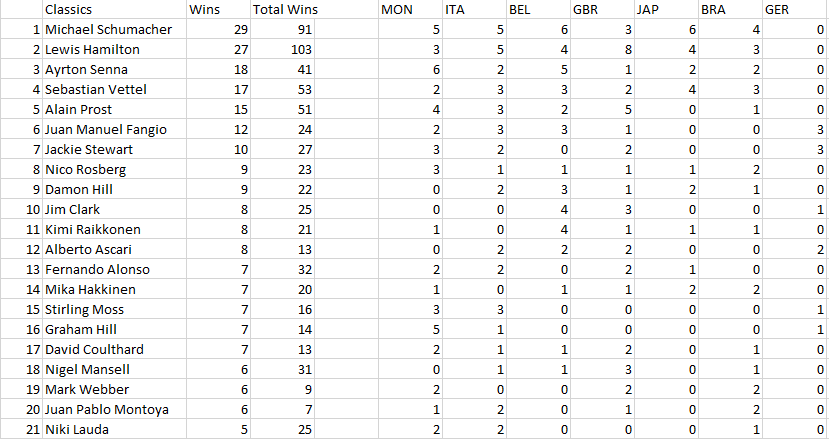

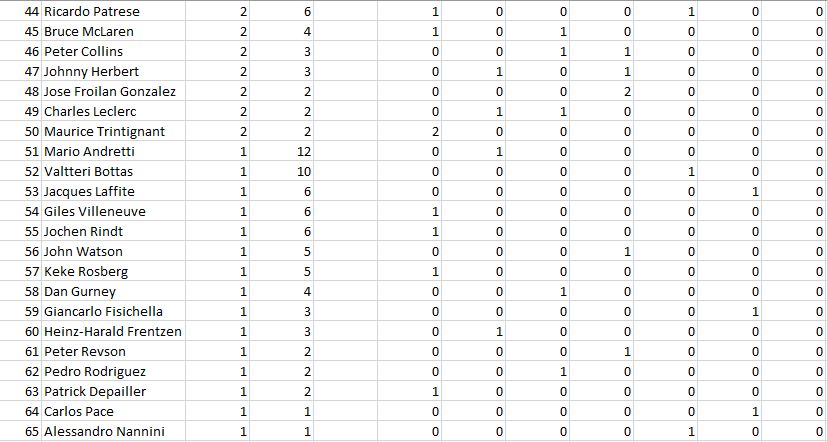
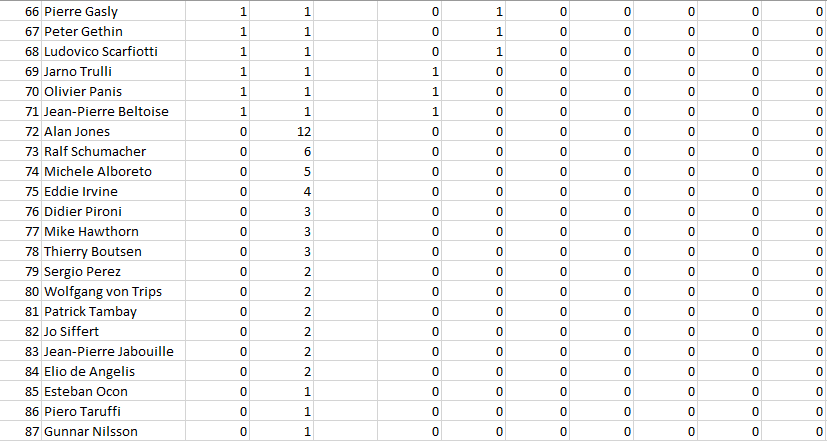
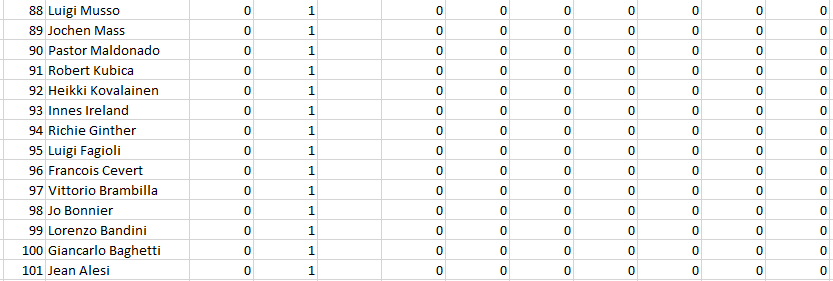
Alan Jones is the driver with the most wins without getting one at one of these classic tracks, while Mike Hawthorn is the only other champion without one of these wins. The most wins are the same as the drivers with the most classic championships, although Michael Schumacher moves to the top. Juan Pablo Montoya has a particularly good record of six of his seven wins coming at classic venues.
In 2023, Max Verstappen became the first driver in history to win all four of the mainstays of the championship in the same year: Monaco, Silverstone, Spa and Monza. He then added Suzuka and Interlagos to win all six of the current classic tracks in the same year.
The individual championships are:

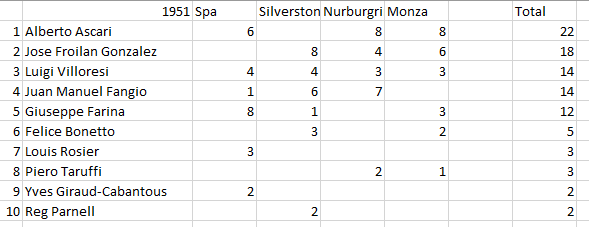

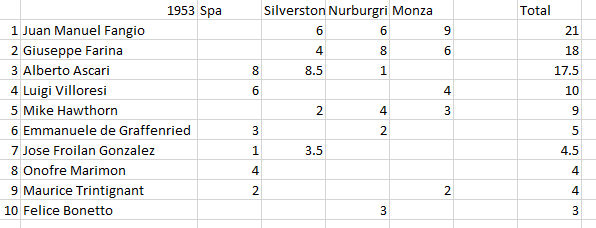
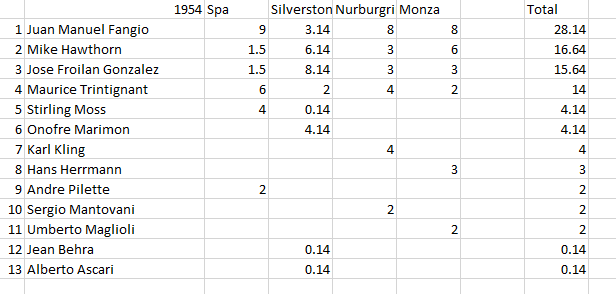
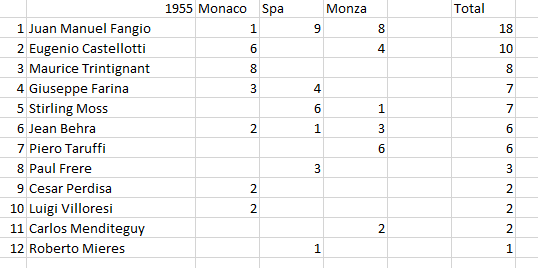
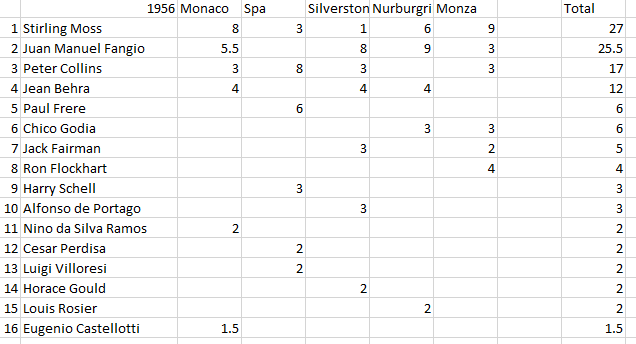

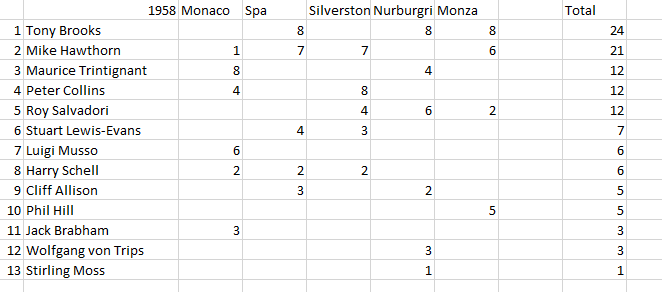
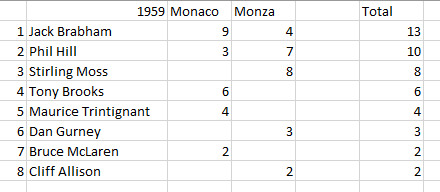
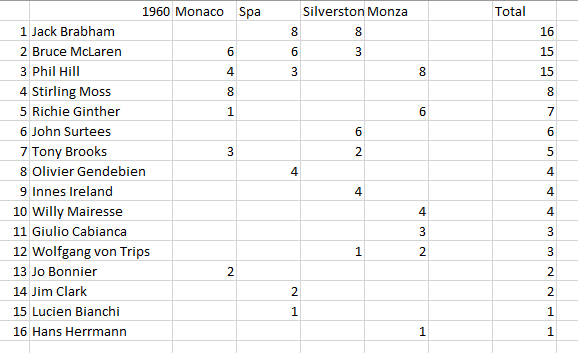
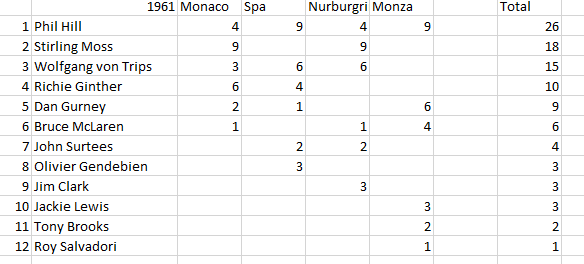
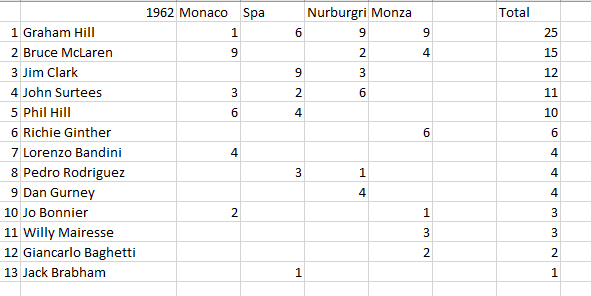

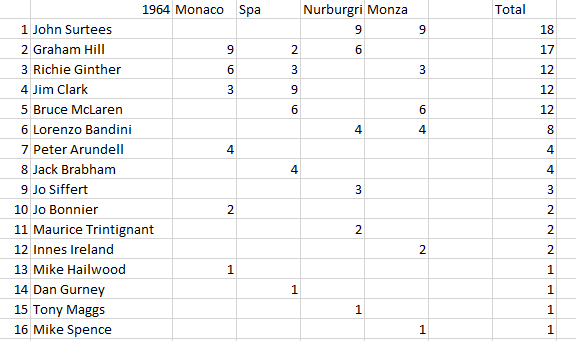
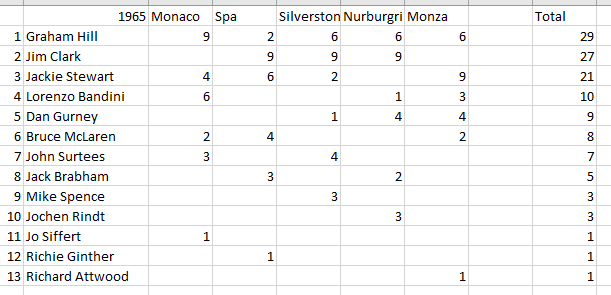
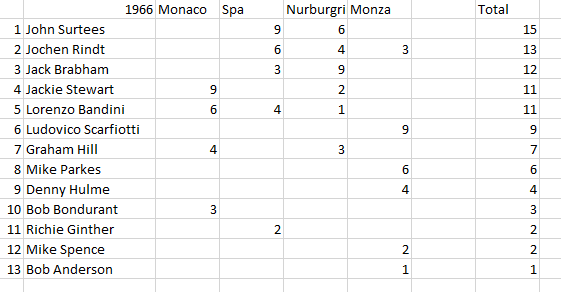

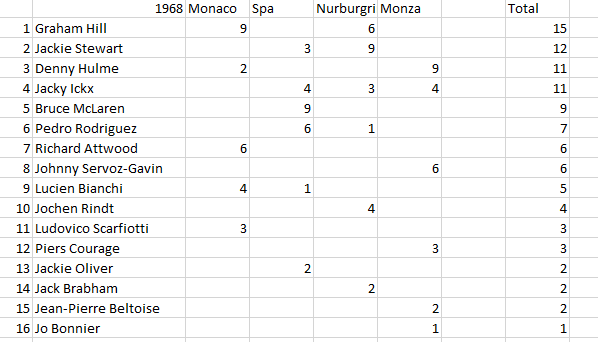
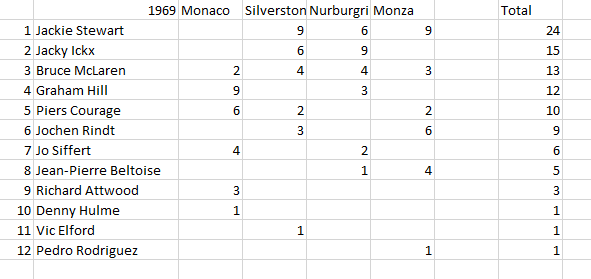
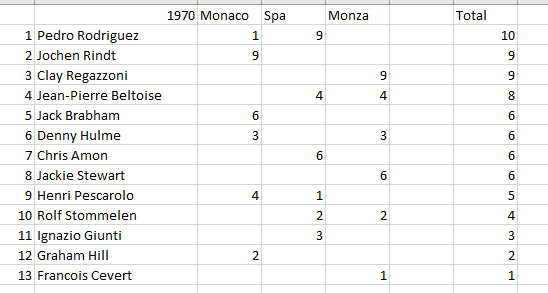


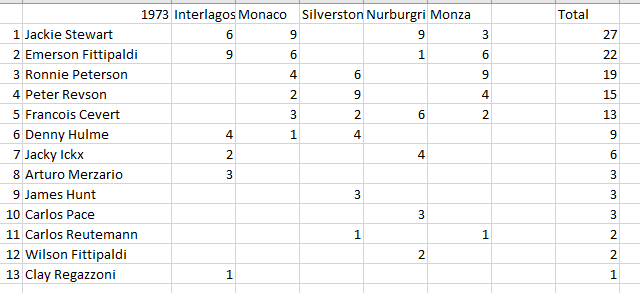

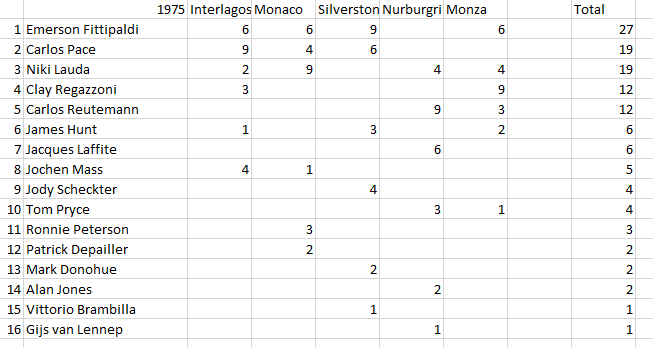

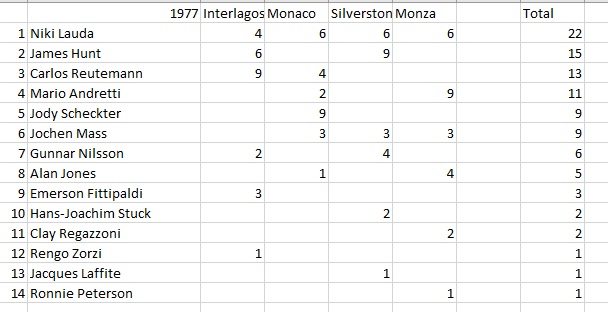
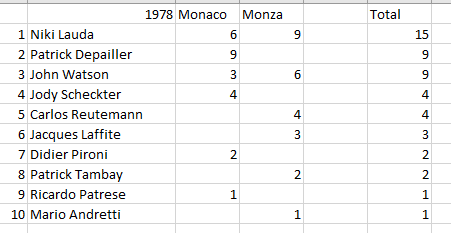

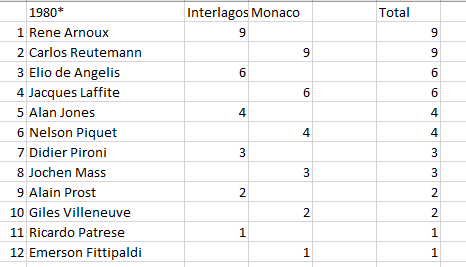
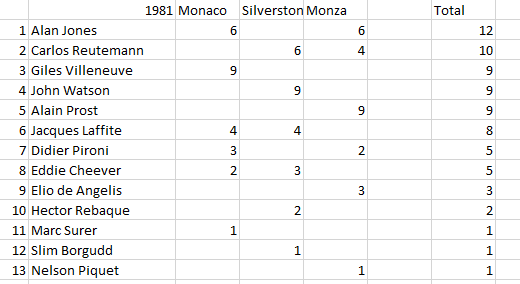
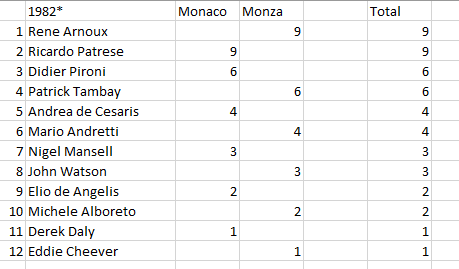
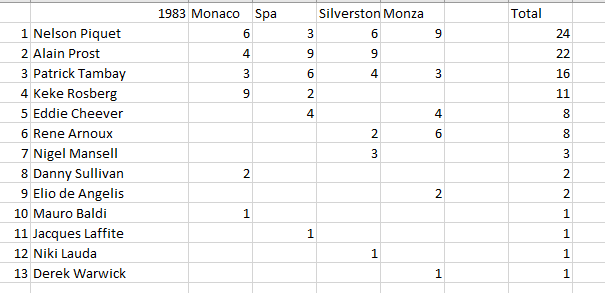
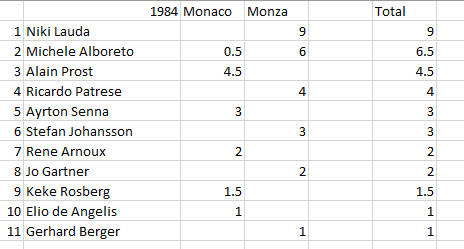
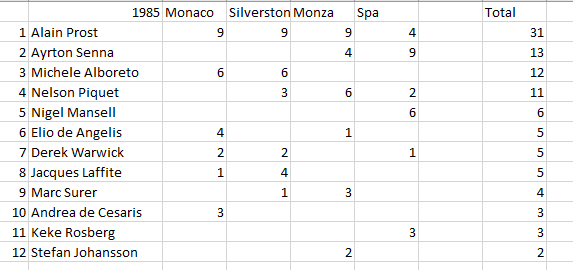
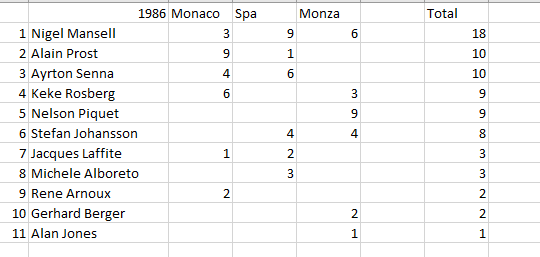
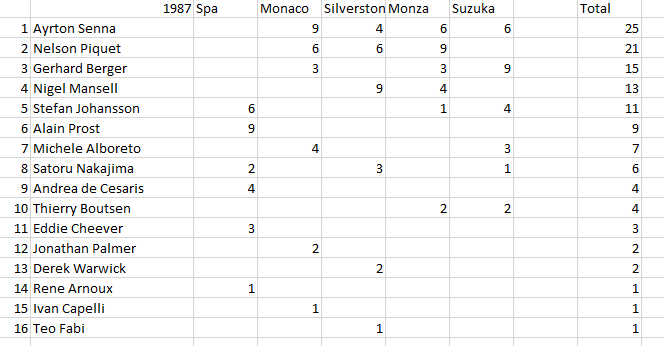
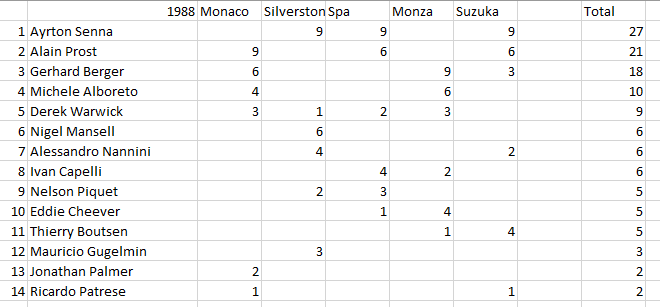
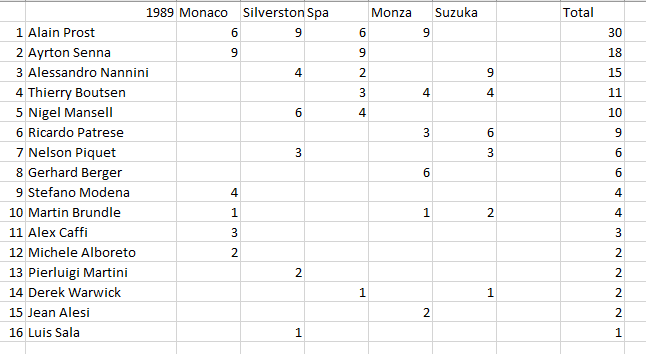
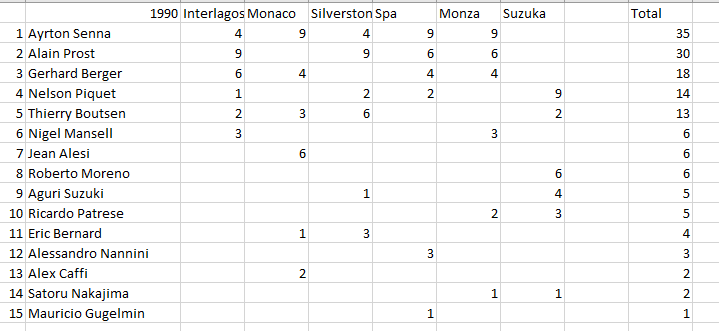


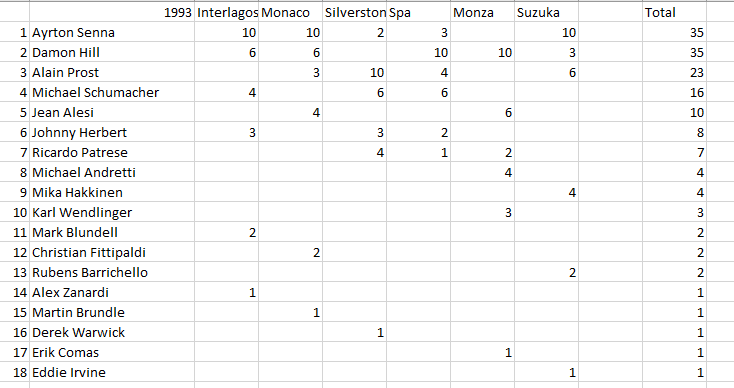
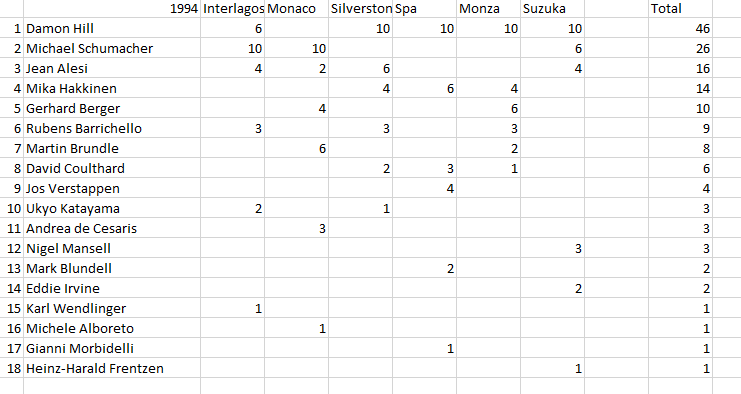
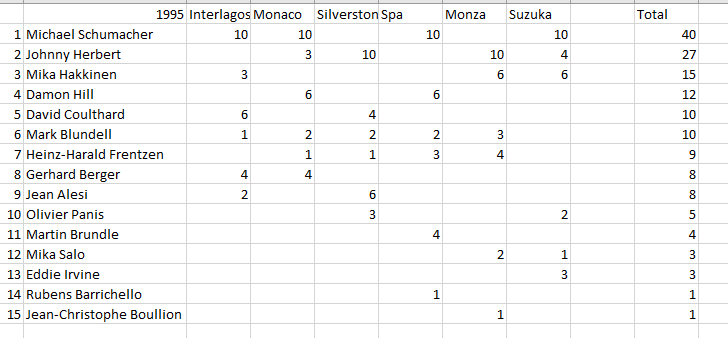
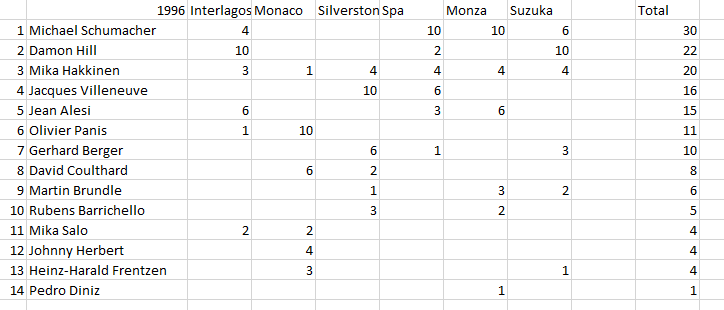
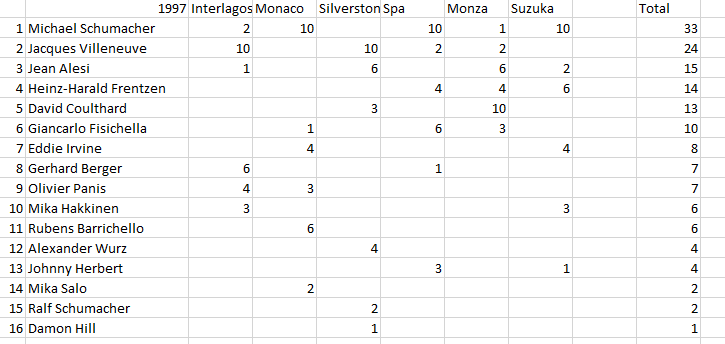
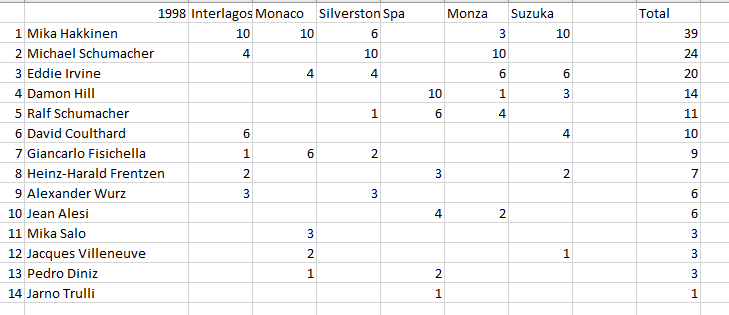
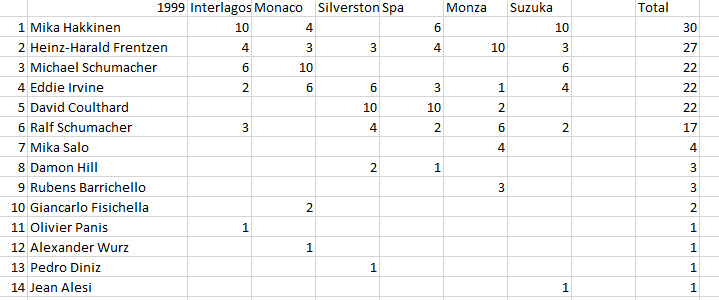
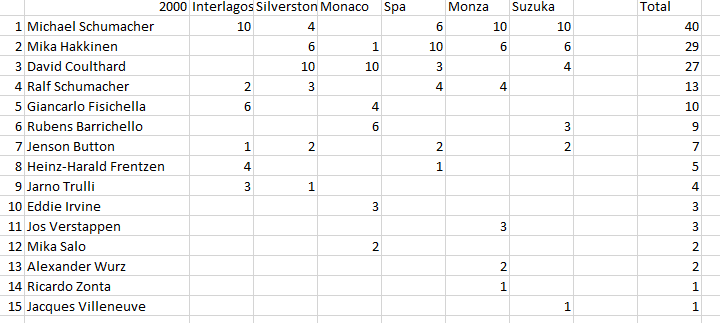
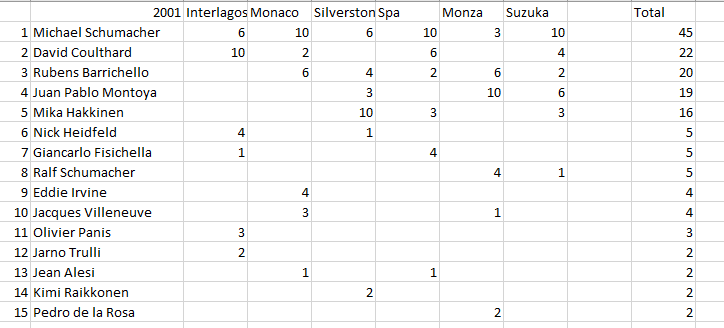
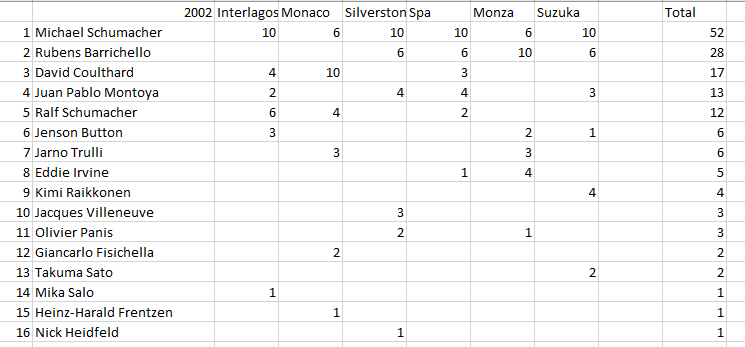
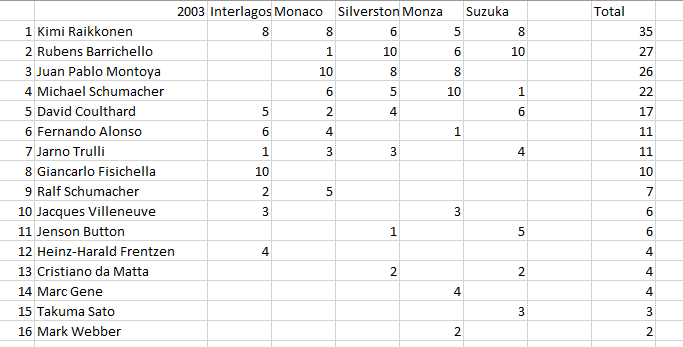

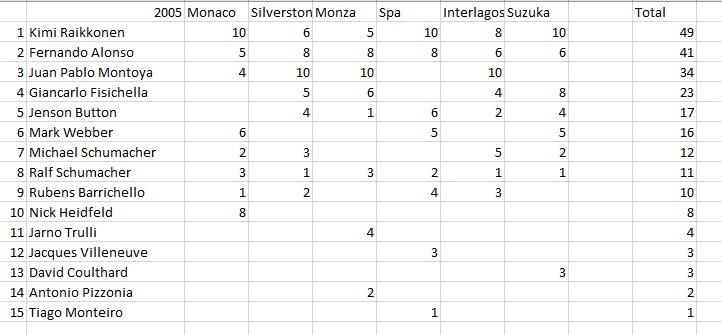
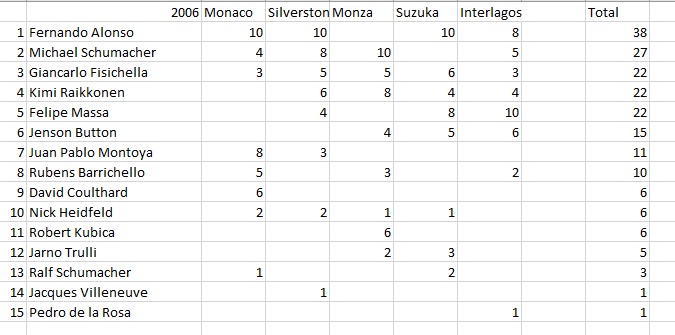

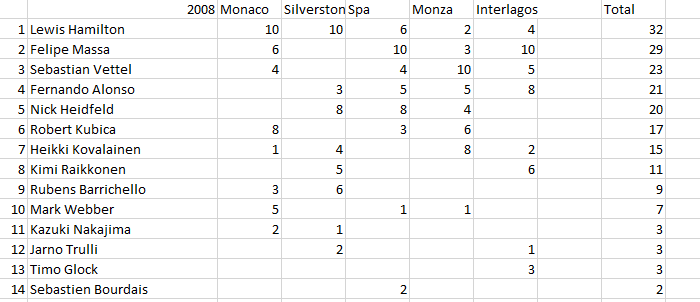

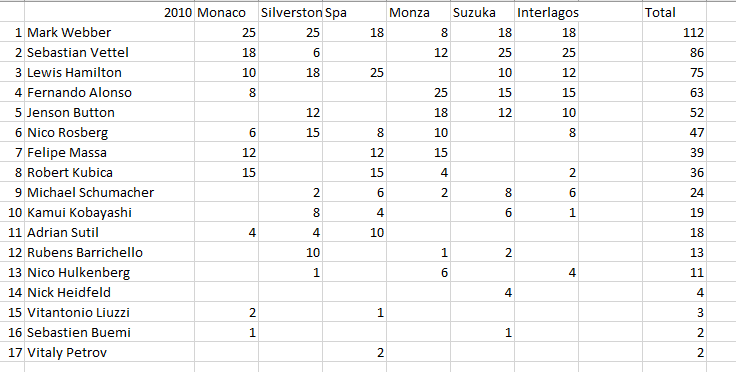
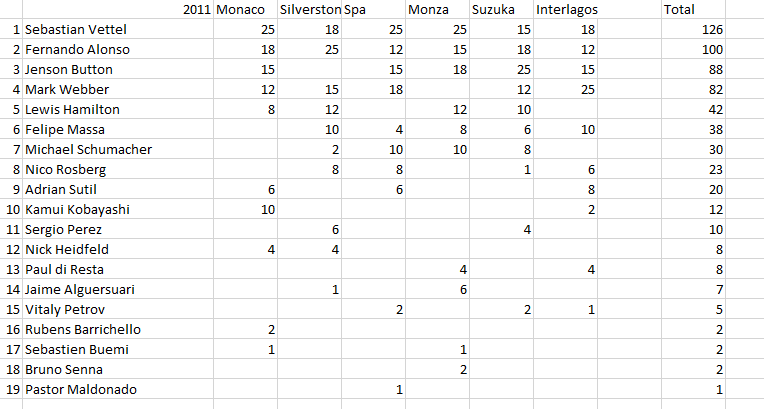


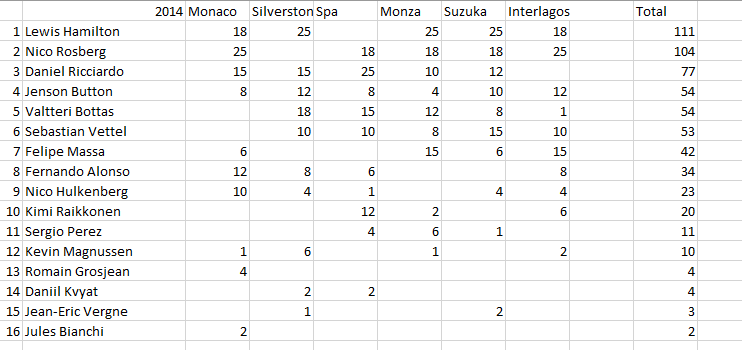

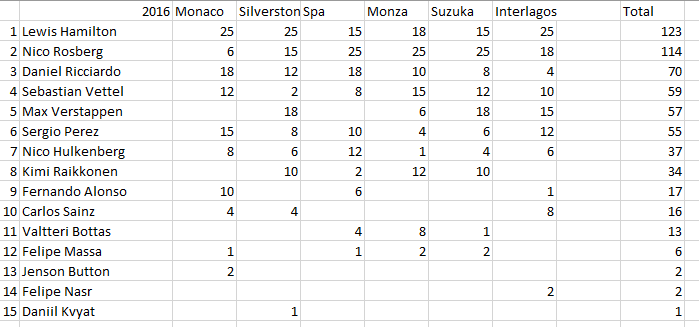

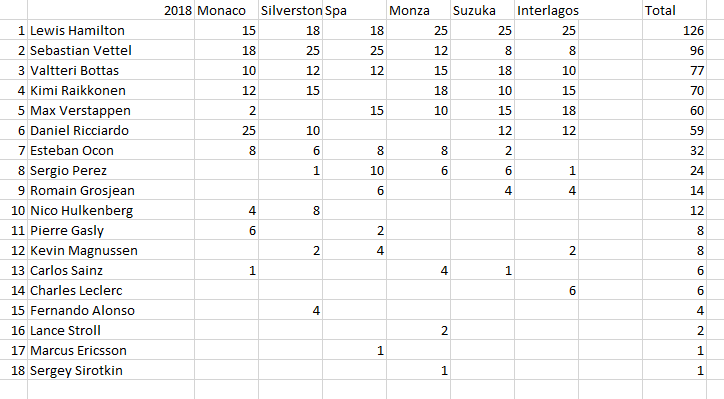
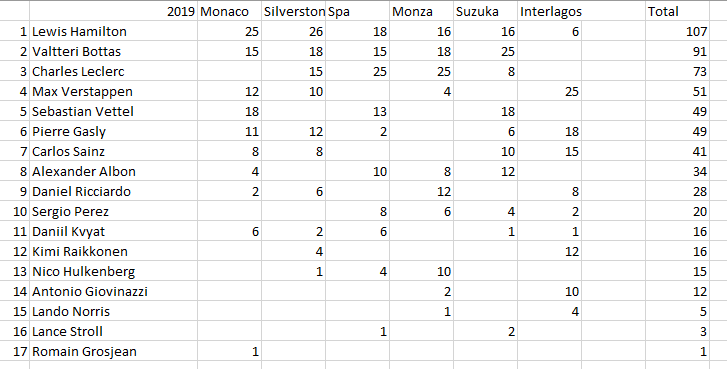
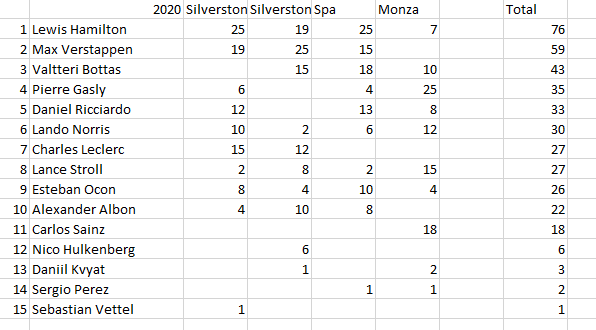
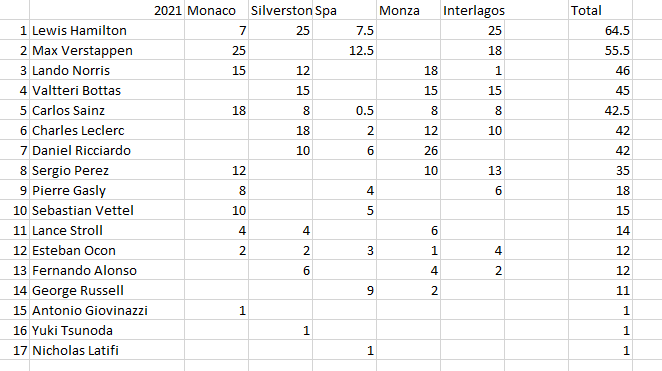
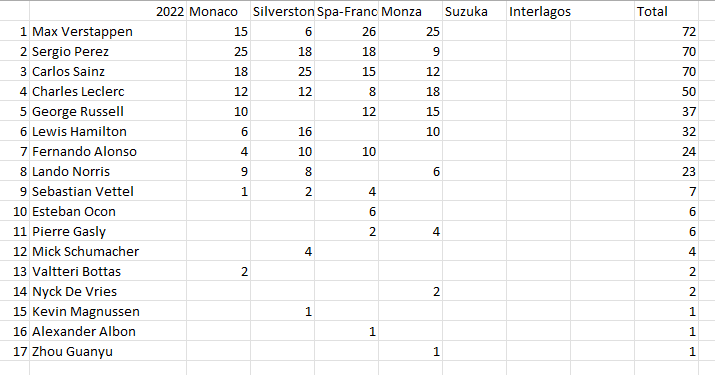
A couple of minor points about the Monza section – Luigi Piotti was just a privateer rather than a teammate of Moss, although he seemed more than happy to help the works team out.
Also, the von Trips fatal crash did not occur on the banking, it was on the run down to Parabolica. I don’t even know of any fatal crashes on the high banks at Monza (apart from in the movies).
LikeLike
Thank you, I have edited this and also changed the article in general to improve some of the poor wording (e.g. ‘The first Monaco Grand Prix was in 1950’).
LikeLike